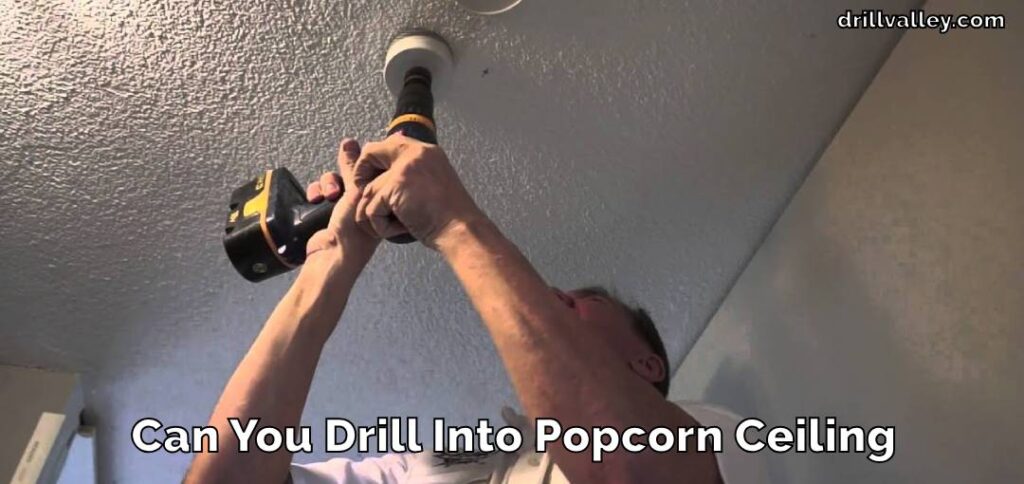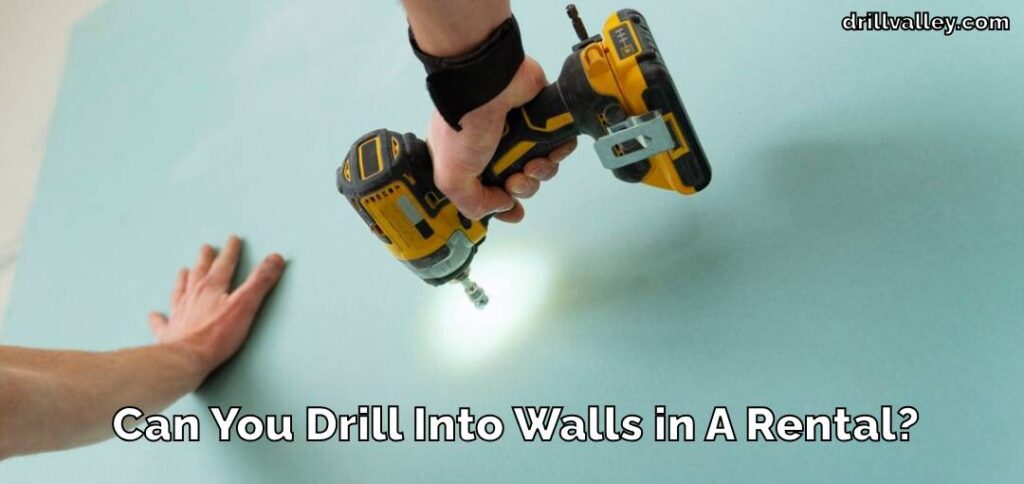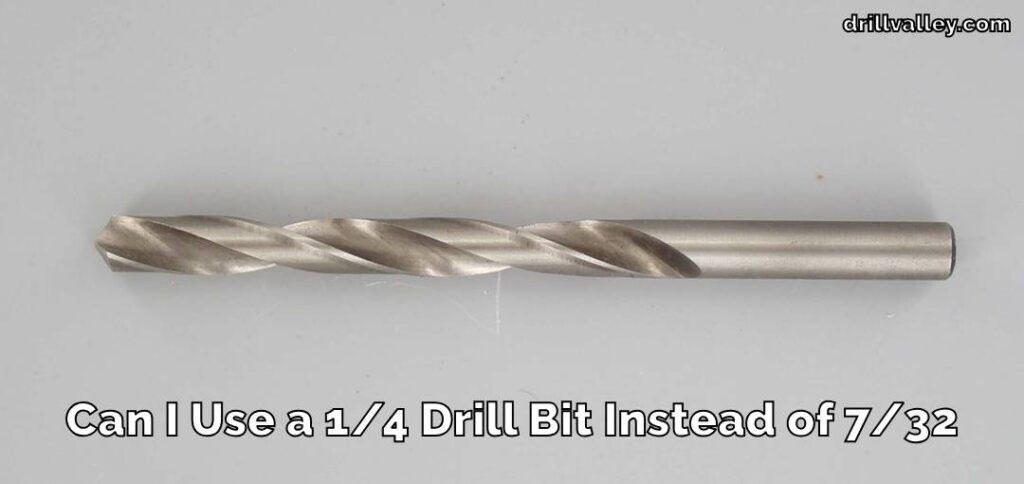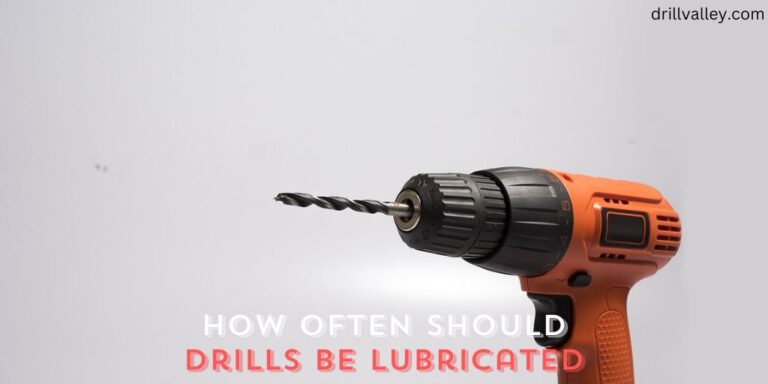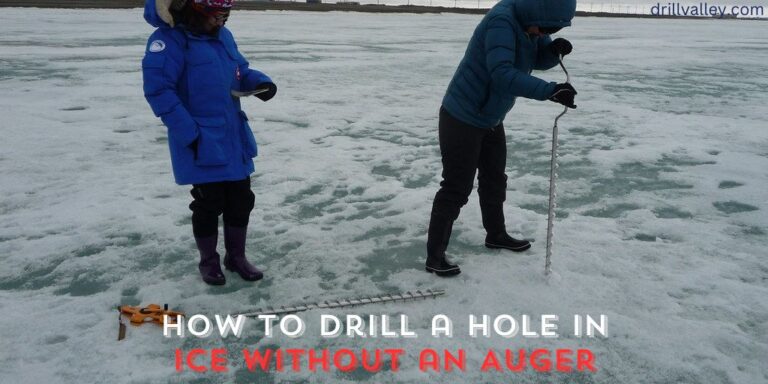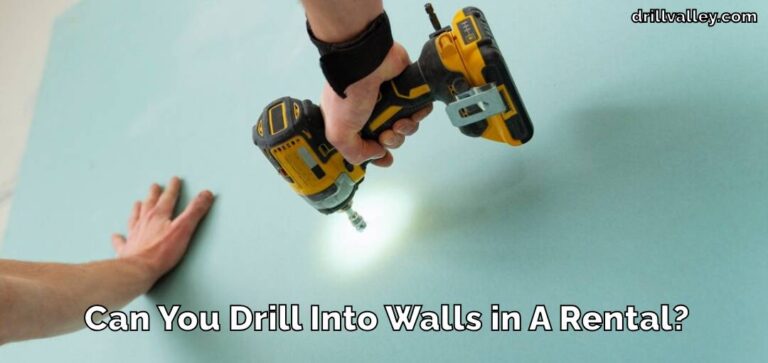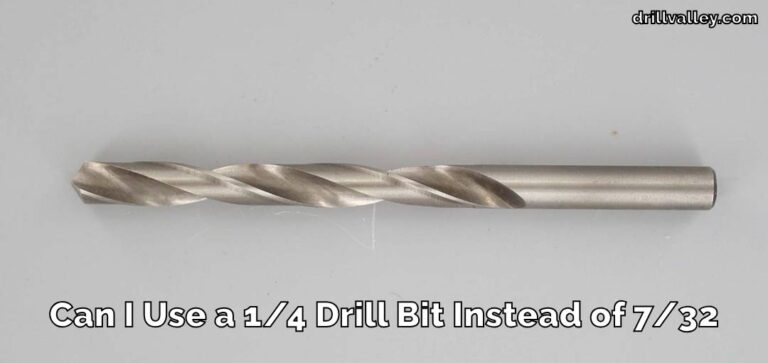How to Anchor a Gazebo to Concrete without Drilling
Setting up a gazebo on concrete comes with its challenges. The main thing people worry about is making sure their gazebo doesn’t move, especially when the weather gets windy. A lot of the time, folks think about drilling into the concrete to anchor their gazebos firmly in place.
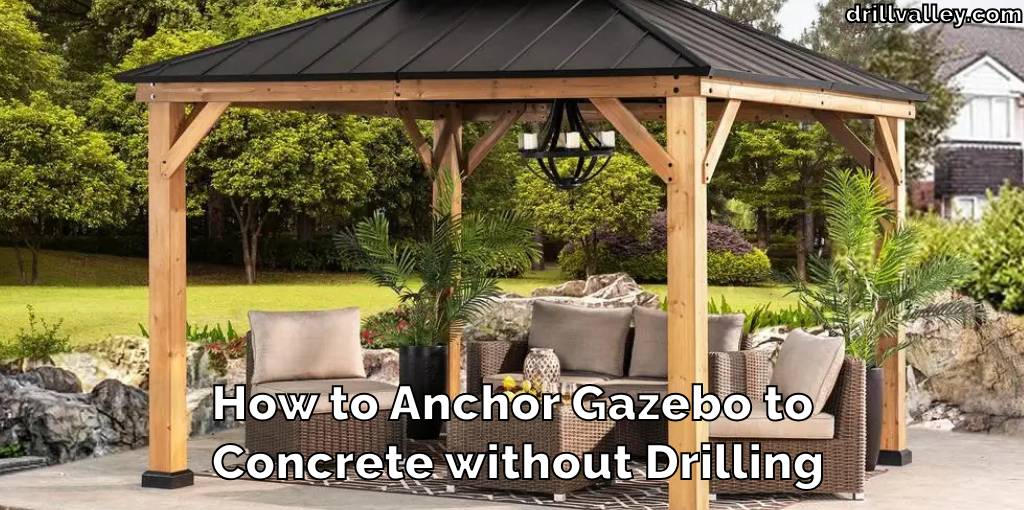
But drilling into concrete isn’t always the best route to take. It’s hard to do, it’s permanent, and not everyone wants to or can drill holes in their patios or garden concrete areas. That’s what we’re focusing on here – how to anchor a gazebo to concrete without drilling. This way is easier on your concrete and simpler overall.
In this article, we’ll explore different ways and tools you can use to keep your gazebo secure without causing any damage to your concrete surfaces. We’re here to help you find the best solution for you, one that keeps your gazebo firmly in place without any permanent changes to your outdoor space.
Why You Need to Anchor a Gazebo to Concrete Without Drilling
Anchoring your gazebo to a concrete surface without drilling is crucial to keep both the gazebo and your concrete in good shape. Drilling into concrete can leave permanent marks or holes, which might not be acceptable, especially for those who are renting their homes or have restrictions on making permanent changes.
Besides, avoiding drilling means you can avoid the noise and effort it involves. Non-drilling methods also give you the freedom to move your gazebo around. Maybe you want to shift it for a special event, or you might decide to change your garden layout – not drilling gives you this flexibility.
It’s also a quicker way to set up your gazebo. You won’t need to spend time gathering heavy tools or dealing with complicated drilling procedures. Most importantly, by not drilling, you reduce the risk of damaging any underground utilities that might be running beneath your concrete surface. This is a safety concern that’s often overlooked.
Using alternatives to drilling, you can set up your gazebo quickly, safely, and with peace of mind, knowing that you can easily move it or take it down without leaving any lasting marks on your property.
Tools We Need to Anchor Gazebo to Concrete Without Drilling
Before we dive into the specific methods of anchoring a gazebo without drilling, it’s important to know what tools and items you’ll need. These tools are easy to find and simple to use, ensuring your gazebo stays secure without any damage to your concrete.
- Weighted Bags or Sandbags: These are great for adding weight to your gazebo’s base. They are easy to fill and place, making them a straightforward solution.
- Heavy-duty Straps or Ropes: These can be used to tie down your gazebo, connecting it to sturdy objects nearby.
- Concrete Pavers or Blocks: These heavy blocks can be placed directly on the gazebo’s base plates to add weight.
- Interlocking Weights Designed for Gazebos: These are specially made weights that can be attached directly to your gazebo’s structure.
- Tension Cables: These cables are useful for creating a strong, anchored connection between your gazebo and other solid structures or stakes in the ground.
Each of these tools has its way of helping to keep your gazebo in place.
You can choose one or combine a few based on your gazebo’s size, your concrete surface, and the weather conditions in your area. The key is to select tools that you find easy to use and that work well in your particular situation.
How to Anchor a Gazebo to Concrete without Drilling
Anchoring a gazebo to concrete without drilling is a great way to protect your outdoor space while keeping it versatile. Here’s how you use these methods, making sure your gazebo stays put even in windy conditions:
Use Weighted Anchors
One of the simplest ways to secure your gazebo without drilling is by using weighted anchors. These can be commercially bought weights that are specifically designed to hold down gazebos or similar structures.
Place these weights directly on each foot of the gazebo. For extra stability, you can add sandbags or water weights, which are especially handy because you can empty them when you need to move the gazebo.
Using Weight Bags or Sandbags
This method is straightforward and effective. Simply place these bags around each leg of your gazebo. It’s important to ensure they are filled with enough weight, like sand or small stones, to keep your gazebo grounded, especially during windy conditions.
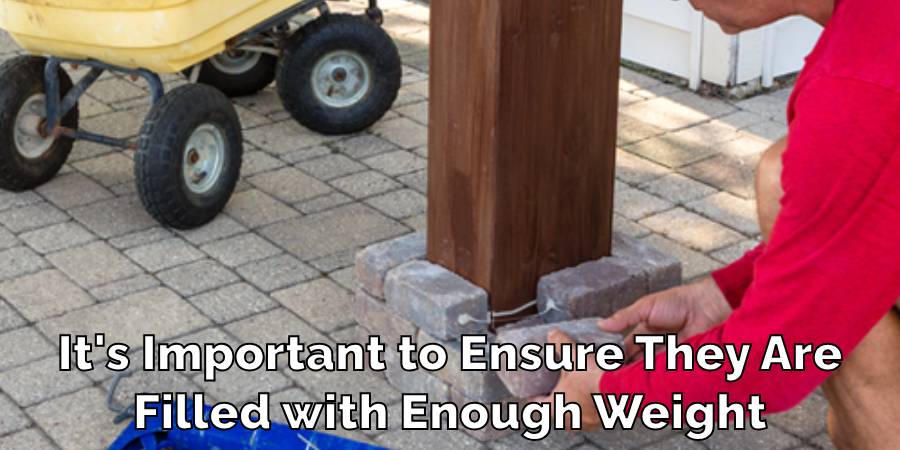
The beauty of this method is in its simplicity and ease of setup. You can also easily remove or adjust the bags as needed.
Straps and Ropes

Use strong straps or ropes to secure your gazebo. Attach one end to the gazebo and the other end to large, heavy objects like concrete pavers or blocks. This method not only adds stability but also flexibility, as you can adjust the tension in the ropes or straps as needed. It’s a reliable way to keep your gazebo in place without causing any harm to the concrete.
Concrete Pavers or Blocks
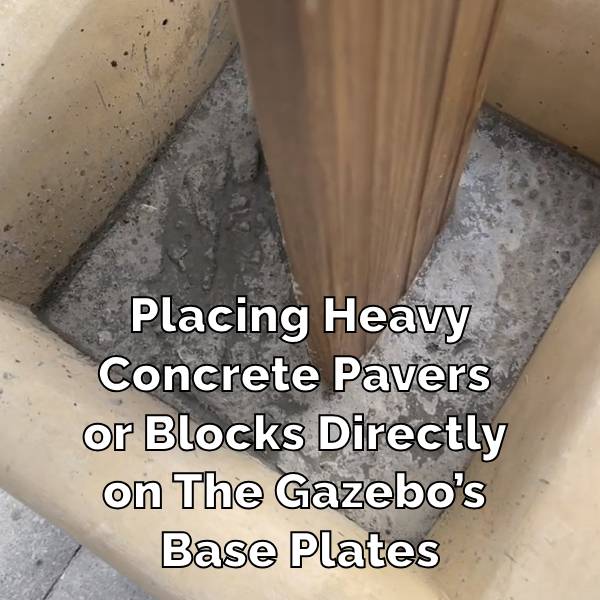
Another effective method is to use heavy concrete pavers. Position a paver under each gazebo leg. For additional security, you can tie the gazebo legs to the pavers with strong straps or bungee cords. This method is easy to set up and dismantle, offering a balance between stability and flexibility.
Interlocking Gazebo Weights

There are weights available that are specifically designed to anchor gazebos. These weights often interlock and attach directly to the gazebo’s legs or frame, creating a secure and sturdy foundation. This method is particularly useful because these weights are made to fit the structure of gazebos, ensuring a snug and efficient fit.
Tension Cables
Tension cables can be used to anchor your gazebo to nearby sturdy structures like walls, trees, or heavy-duty ground stakes. This method is especially useful in areas prone to strong winds. The cables provide a firm hold, reducing the risk of the gazebo tipping or being blown away. They require a bit more setup but offer a high level of security and stability.
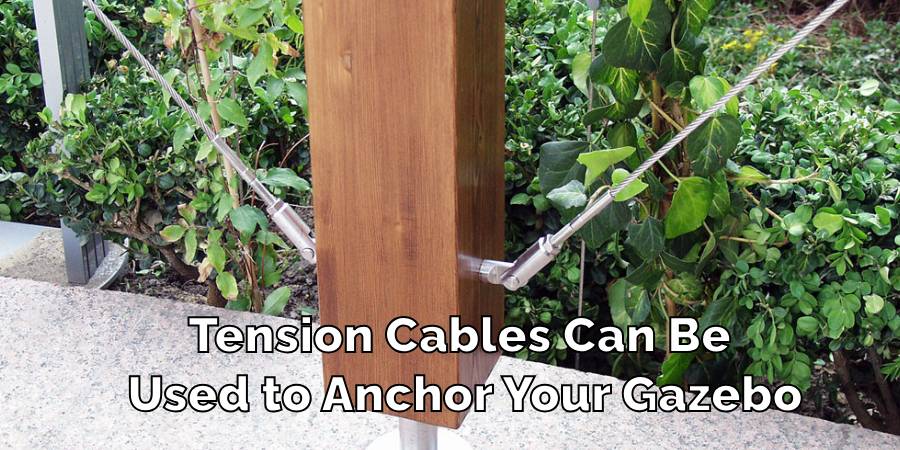
Utilize Planter Boxes
Create or buy large, heavy planter boxes and place one at each corner of the gazebo. You can fill these planters with soil and plants, making them part of your garden decor while also serving as anchors for your gazebo. The weight of the soil and plants will help keep the gazebo in place.
Install a Gazebo Frame Anchor Kit
Some manufacturers offer frame anchor kits that do not require drilling. These kits typically include heavy-duty straps and pegs that grip the concrete surface. Make sure the kit is compatible with both your gazebo model and concrete surfaces.
Regardless of the method you choose, it’s important to regularly check the stability of your gazebo, especially after bad weather. Ensure that your weights or anchors have not shifted and that everything remains tightly secured.
Precaution While Anchoring Gazebo to Concrete Without Drilling
Taking the right precautions is crucial when anchoring your gazebo to concrete without drilling. These steps are simple but essential in ensuring that your gazebo remains safe and stable over time.
- Even Distribution of Weights: It’s important to place weights evenly around the gazebo. Uneven weight distribution can lead to leaning or tilting, which could weaken the overall structure. Make sure that each leg of the gazebo has an equal amount of weight to keep it balanced.
- Regular Stability Checks: After setting up your gazebo, it’s wise to regularly check its stability. This is especially true following severe weather conditions like strong winds or heavy rain. A quick check can help you spot any issues early on, such as loosened weights or shifted supports.
- Use of Weather-Resistant Materials: When choosing materials to anchor your gazebo, opt for those that can withstand various weather conditions. Materials that are resistant to water, sun, and wind will last longer and maintain their integrity, ensuring a stronger hold. This is particularly important for items like straps, ropes, and sandbags.
- Monitor for Wear and Tear: Over time, materials can wear out. Regularly inspect all anchoring materials for signs of wear, like fraying ropes or weakened bags, and replace them as needed. This will help prevent unexpected failures.
- Consult Gazebo Instructions: Always refer to your gazebo’s instruction manual. Some manufacturers provide specific guidelines for anchoring their models, which can be extremely helpful.
- Avoid Overloading: While adding weight is key, too much weight can strain your gazebo structure. Follow the manufacturer’s recommendations regarding the maximum weight your gazebo can safely handle.
By following these precautions, you can ensure that your gazebo stays securely anchored to your concrete surface without the need for drilling. These measures are not only about maintaining the gazebo’s position but also about ensuring safety for everyone who uses it.
FAQ’s
How Do You Keep a Gazebo from Blowing Off Concrete?
To prevent your gazebo from being blown away, especially on concrete where you can’t easily anchor it with stakes, use weighted bags, straps, or specialized gazebo weights. Place weighted bags or sandbags around each leg of the gazebo.
You can also attach heavy-duty straps to anchor points on the gazebo, extending them to solid, heavy objects nearby. Another option is to use weights designed specifically for gazebos, which often attach directly to the legs or base, providing a firm and secure hold.
How Do You Hold a Pergola Down without Drilling?
For a pergola, which is typically larger than a gazebo, use methods similar to those for gazebos but adjusted for the larger structure. Weight bags and tension cables are effective. The weight bags can be placed at the base of the pergola’s posts, while tension cables can be used to tie the pergola to sturdy surrounding structures.
Ensure that the weights and cables are proportionate to the pergola’s size and weight for maximum effectiveness.
How Do You Secure a Gazebo in High Winds?
In areas prone to high winds, it’s important to add extra security to your gazebo. Increase the weight at each leg by using heavier sandbags or multiple weights. Tension cables can also be a good addition, as they provide lateral support against the wind.
Consider anchoring the cables to heavy-duty ground stakes or secure points on nearby buildings. Regularly check these anchors to ensure they remain tight and effective.
How Do You Weight Down a Gazebo on Concrete?
To weight down a gazebo on a concrete surface, use heavy-duty sandbags, concrete pavers, or gazebo-specific weights. The sandbags can be placed around each leg or attached to the frame, depending on the design of your gazebo. Concrete pavers are effective when placed on the base plates of the gazebo, adding substantial weight.
Special gazebo weights are designed to fit seamlessly with the gazebo’s structure, offering a visually appealing and practical solution.
What Can I Use to Hold Down My Gazebo?
There are several options for securing a gazebo: sandbags, concrete weights, tension cables, and heavy-duty straps are all effective. The choice depends on your specific gazebo and the conditions of your outdoor space. Sandbags and concrete weights are good for adding heft at the base.
Tension cables offer additional support by anchoring the gazebo to nearby sturdy structures. Heavy-duty straps can be used similarly, providing a secure tie-down option. It’s often best to use a combination of these methods for maximum stability.
Conclusion
Successfully anchoring a gazebo to concrete without drilling is both doable and practical. The methods we’ve discussed offer not only a firm hold for your gazebo but also maintain the condition of your concrete areas. These approaches give you the flexibility to set up your outdoor space just the way you like it, without permanent alterations.
It’s important, though, to regularly inspect your gazebo, checking for any loosened weights or wear and tear, especially after harsh weather. This ongoing attention will help ensure that your gazebo remains a safe and enjoyable part of your outdoor environment for a long time.
Remember, the right balance between stability and care can make your gazebo a lasting, worry-free addition to your home.
Can You Use Impact Driver Bits in A Drill
Knowing whether you can swap impact driver bits into a regular drill matters more than…
Can You Drill Into Popcorn Ceiling
Wondering Can You Drill Into Popcorn Ceiling for your next home improvement project? Popcorn ceilings,…
Can You Drill Into Walls in A Rental?
Renting an apartment brings the challenge of personalizing your space within the confines of rules…
Can I Use a 1/4 Drill Bit Instead of 7/32
When you’re elbows deep in a project and suddenly realize the 7/32 drill bit you…
Can You Drill Concrete Without A Hammer Drill
Drilling into concrete requires both precision and the right tools, notably a hammer drill and…
Can You Use Different Brand Drill Bits?
The right drill bit size is crucial for any project, big or small. It’s the…


